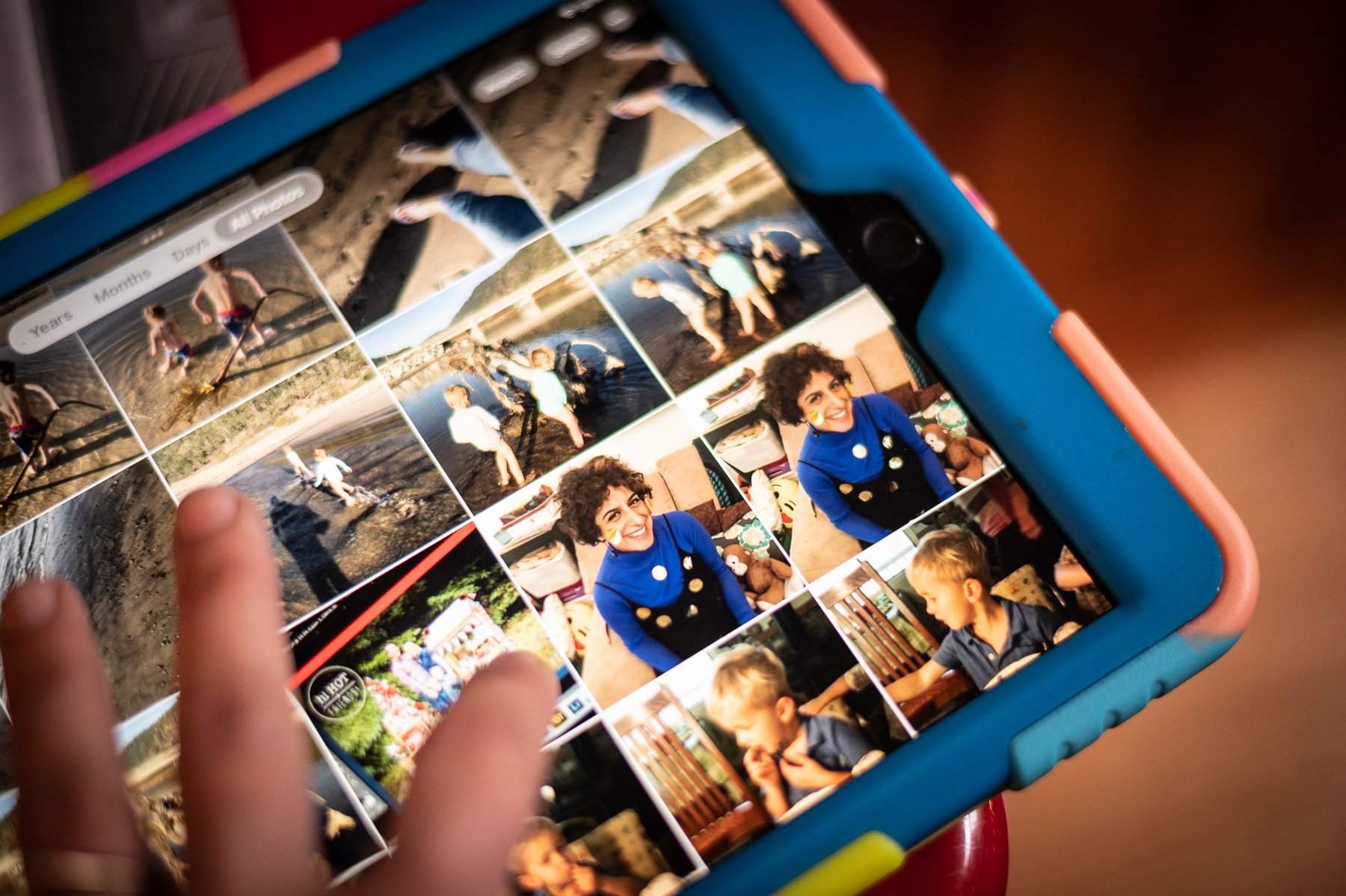ON BEING: LESLEY LOUDEN
Visual Literacy
Lesley Louden is a documentary and art photographer, and a professor/chair in art photography at Cabrillo College in Santa Cruz, CA. She has been teaching photography to wonderful students at the college level for the past seventeen years in the San Francisco Bay Area. Her photographic work has been featured in exhibitions at the San Jose Museum of Art, the Santa Cruz Museum of Art & History, the World Affairs Council in SF, and the George Soros Foundation Moving Walls Documentary Photography Exhibition in NYC and Washington DC. Lesley studied photography at Ohio Wesleyan University (BFA), the University of New South Wales in Sydney, Australia (MA), and Cranbrook Academy of Art (MFA).
January 2022
Why We Should Nostalgize and Reflect with Our Snapshot-Photos
BY LESLEY LOUDEN
During shelter-in-place I saw my partner engaged in an act of self-care - a nostalgia-provoking, time-traveling, joyful process of looking at old photos of our kids as babies and toddlers.
I became curious about the possibilities of this deliberate act of nostalgizing and reflecting with personal snapshots. During the pandemic, with no end in sight, I’d become endlessly overwhelmed between full-time work, kids doing zoom school, the health scare of COVID-19 on my folks and friends, and the global turmoil that everyone was experiencing. Because of this, sometimes throughout the workday, John would text me adorable photos of our kids and other photo snippets from our past. When his photo texts arrived, I’d hear the vibration of my phone and see his name pop up with visual love letters meant to get me to ease up and have some perspective. When I looked at the images he’d sent, I would feel a physical and psychological change in my body and emotions. My shoulders loosened from a prior state of tension and my hyper-focus on my daily stresses eased as I took in a broader view of my life.
Could there be importance in dedicating time to viewing (and capturing) our snapshots of friends and family? Is this an under-utilized support act for our well-being?
As a lover of photos, a photographer, and an instructor in image literacy, I was inspired to investigate the importance of viewing (and making) snapshot photography on a personal level, as a ritual. From research into the psychology of viewing images, I found that snapshot photos, family albums, and personal digital photo reminders are well-known to unlock memories, but it is also proven that these photos literally warm up our bodies and allow our personal histories to be part of the present [1].
With the invention of the $1 Kodak Brownie camera in 1888, ordinary people like you and me were able to follow Kodak’s guidance, “You press the button, and we do the rest.”
This made photographs of everyday life easier and more affordable. Photography’s democratic nature has evolved even more since the late 1800s and almost all of us carry around a cellphone camera 24/7.
Seeing curated sets of my old photos pop up on my photo app can feel like a cold dunk into the ocean, a shock to wake me up to what’s actually important. When I look at my old snapshots the act becomes two things for me. First, it evokes a feeling of joyful connection and a cue that I’ve got support. This serves as visual evidence that reassures and grounds me. And secondly, my snapshots are a mirror that puts my daily concerns up against the larger context of my life. I eventually recognized that this is an activity of reflection by design, a conscious act to carve out space for discernment. This is a private riotous undertaking to fight the unconscious, machine-like drudge and daily anxieties that are easy to march in line with. Now, I love stopping to reflect; to remember that life is ‘a marathon, not a sprint.’
In our visual world today, we are served image sequences (from ads and media) full of pressures that can be pervasive. So use these tips below to design a deliberate act of nostalgizing and reflecting with your own personal snapshots.
Tips for Nostalgizing and Reflecting with Your Snapshots:
View your photos in a comparison-free zone to avoid the quest for mass confirmation that can deliver unconscious societal standards or expectations. So, choose images of people, places, and pleasurable times in your life to flip through.
Don’t necessarily shut yourself off when a tough personal narrative reveals itself in one of your snapshots from your past. If you can slowly embrace these hard times, recognizing that you’ve overcome many of them in your individual history, may ignite a powerful use for these vulnerabilities. Try to remember that vulnerability can build connection, dismantle facades, and make others feel less alone. These memories can be a mighty gift of empathy and kindness (for others to not feel so alone, based on your experiences in hard times).
Beware to sometimes resist the urge to be part of “Kodak culture, a pictured reaffirmation of cultural and structural values” and instead, make space by design to reflect on what YOU find joyful and beautiful through a conscious act of reflection with snapshots.
Taking photos of joyful moments can make us be more in the present, but do not post the photos right away on social media if you want to stay in the present (research suggests).
Curating photo albums with printed snapshots can be a fantastic way to take part in an act of self-care.
Works Cited:
[1] Tierney, John. “What Is Nostalgia Good for? Quite a Bit, Research Shows.” The New York Times, The New York Times, 8 July 2013, https://www.nytimes.com/2013/07/09/science/what-is-nostalgia-good-for-quite-a-bit-research-shows.html.
READ MORE
From Lesley Louden
Visual Literacy
Viewing photographs can help us accept the differences among us and assist us in becoming passionate about learning and unlearning from each other’s stories.
Boost Visual Literacy: Ideas on Where to Start Today
Viewing photographs can help us accept the differences among us and assist us in becoming passionate about learning and unlearning from each other’s stories.
Visually Literate Creators & Viewers of Photographs
Viewing photographs can help us accept the differences among us and assist us in becoming passionate about learning and unlearning from each other’s stories.






